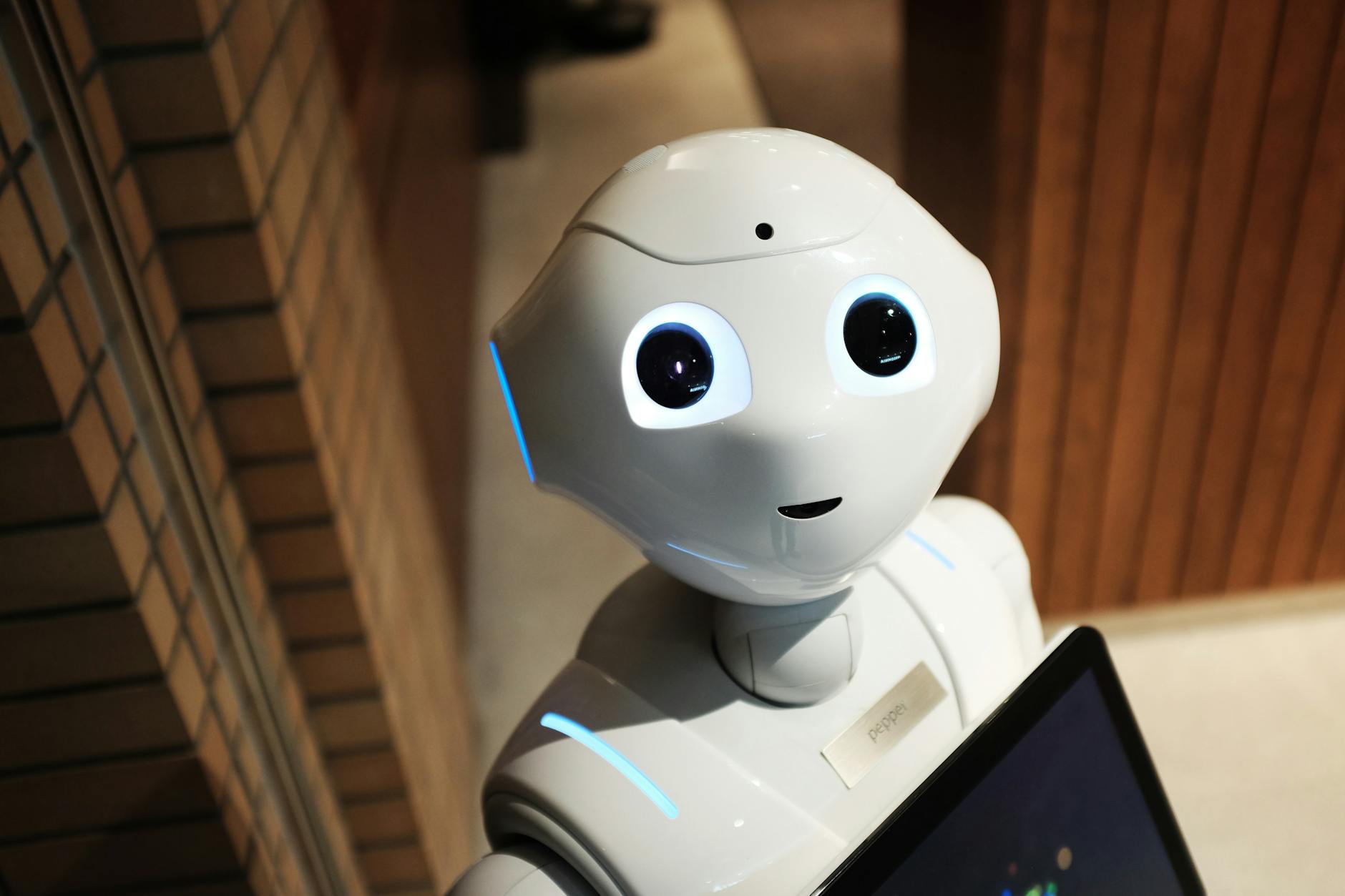 Kate Andersen |
07.16.20 |
5 min read
Kate Andersen |
07.16.20 |
5 min read Finding the Sweet Spot Between Artificial Intelligence and Human Intelligence

Without a doubt, Artificial Intelligence (AI) has made an impressive impact on marketing, and it will only continue to grow from here. Forrester Research predicted that "by 2020, businesses using AI to uncover new marketing insights will take $1.2 trillion each year from competitors that don't." That's trillion with a T.
If you haven't fully embraced the technologies of AI or subscribed to services sold as "AI Marketing Tools," don't let that piece of research scare you. There's a good chance you're already using AI without even realizing it. If you've ever searched for an image on Google, asked a smart speaker to play your favorite song, or received personal recommendations by Netflix, you've been helped by AI. And when it comes to marketing, if you've used Facebook advertising or have a chatbot on your website, you've already leveraged AI technology to enhance your customers' journey.
What's important to know, and why we've gathered here today, is that artificial intelligence is here to stay; it's certain to help your company grow; and it's not out to replace you. In fact, it needs you.
What Is Artificial Intelligence?
Let's back up the bus and establish a working definition of artificial intelligence. Even though the science of AI has been around since the 1950s, it's still a fairly new concept in real life. And since AI has so many applications, there's some misconception around what it actually is. Simply put, artificial intelligence is the name of a computer system taught to perform tasks that normally require human intelligence.
One application of AI is machine learning, which enables computers to use algorithms to make predictions about future outcomes based on historical data. (Think Facebook newsfeeds and Google search results tailored to your personal preferences.) Machine learning allows computers to teach themselves and become smarter with more data and time. And, it's the type of AI used in most modern marketing practices.
The Place for AI in Marketing
With so many touchpoints and ways to connect with consumers online, it's humanly impossible to keep track of everything without the assistance of AI. What would take days or months of data collection by humans can happen in mere minutes with machine learning. Once programmed, bots have the ability to collect, crunch, sort, and store massive amounts of data - at breakneck speeds, at all hours of the day, for as long as you need it. And this type of rich data can be used to benefit your marketing in several ways.
Here are just three examples:
- Personalized Experiences: Consumers don't need more messages crammed down their feeds. They need curated information, and AI can help. With each online session, consumers provide data that establishes their browsing and buying habits. With the use of AI-powered software, this information can be used to personally tailor the advertising, news, and posts that individuals see.
- Audience Segmentation: As machine learning algorithms comb through mountains of data, they're able to learn key insights about audiences and make connections between data points. The result is a highly targeted audience profile that can be used for all forms of marketing - including email campaigns and in-store promotions.
- Content Creation: We say this with caution, but yes, you can use AI to generate viable topics for blog posts and other online content. You can even create "smart campaigns" with Google Ads that generate headlines based on website content. This is not foolproof, though. A human will ultimately need to review any automated content to ensure it connects with a human audience.
Along that note, it's important to realize AI and machine learning are not the end-all-be-all marketing solution. Human intelligence will always be important. Here's why.
The Necessity of Human Intelligence
Artificial Intelligence works at its best when humans are involved. After all, humans are the ones who painstakingly programmed AI in the first place. Every good idea and piece of brilliant technology started with human intelligence, and it's worth noting that while machine learning has some cool tricks up its sleeve, it has its limitations.
For one, AI can't understand the nuances of human emotion. It's called "artificial" for a reason. As humans crave authentic connections, it doesn't take much to sniff out something that doesn't feel or sound real. Not only that, but AI can't apply years of personal life experiences to consumer insights as humans can.
Secondly, while machines can be programmed with predictive analytics to help determine future behaviors, it's not perfect. Just because something happened in the past doesn't mean it's guaranteed to happen in the future. Take this year, for example. No one could have predicted the Great Toilet Paper Shortage.
Also, while AI is said to be faster and more accurate than humans, it can fail to execute properly. For instance, when it comes to voice recognition, human ears can hear and interpret what people are trying to say, whereas machines just aren't there just yet. (Alexa, we said extra fries, not exercise.)
Another interesting point about AI is that while it's helpful for delivering personalized experiences (and mentioned as a benefit above), it's not able to eliminate biases built into an algorithm. We see this in our news feeds, which only shows us stories and posts that confirm our existing beliefs. Machine bias can also cause significant issues for a brand - like that time the Amazon AI recruiting tool only selected male candidates.
As you can see, AI and HI both have their strengths and weaknesses, and the role of humans remains critical to the success of AI. It's our job to understand our fellow humans and provide better data for AI to test and optimize. And as machines get smarter, it frees us up to focus on the more creative aspects of our job. We're able to spend more time helping people and solving human problems while the bots are busy grinding it out. That's when you've found the sweet spot.
Want to chat more about this topic or explore ways to apply AI to your digital marketing? Give us a call and talk to a human - a nice one, too.




